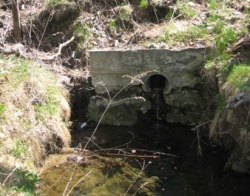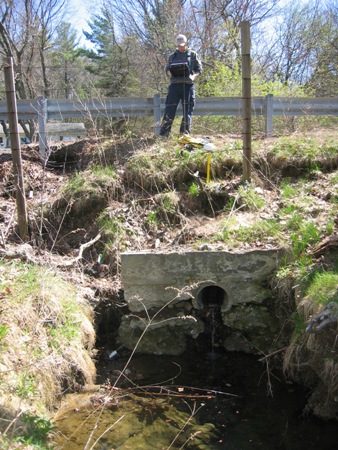
National Pollutant Discharge Elimination System Poses New Challenge for Municipalities
- By Betsy Frederick
- Sep 12, 2011

Throughout the country, limited resources coupled with an increasingly stringent regulatory landscape and seemingly never-ending infrastructure issues are challenging municipalities to get more creative in their program development and implementation strategies. Soon, they’ll have yet another challenge in the form of permit renewals under the EPA’s National Pollutant Discharge Elimination System (NPDES). These permit terms will require stormwater infrastructure to be managed, operated and rehabilitated at a level previously reserved for water and sewer systems. With a thorough understanding of these new permit terms, however, municipalities can better brace themselves for the inevitable resource challenges ahead.
Emanating from the Clean Water Act, the NPDES permit program has long been an effective means of regulating point-source pollutants discharged into U.S. waters from public and private industrial and wastewater infrastructure. It wasn’t until the introduction of NPDES Phase I in 1990, however, that the third major factor affecting water quality — stormwater run-off — became a part of the equation, requiring cities of 100,000 or more to obtain permits and maintain compliance.
In 1999, regulators implemented Phase II to include municipal separate storm system operators (MS4s) in smaller communities. The initial permit term of Phase II was structured primarily to encourage program development and watershed-wide planning efforts. These were to be achieved through six minimum control measures that encompassed operational, educational and regulatory components. Means and methods were essentially left to the regulated community to define. However, because most of the metrics in this term were qualitative rather than quantitative, the subjective nature of success created many inconsistencies in implementation across the country.
As a practical matter, communities had few financial resources available to allocate toward creation and management of their stormwater systems beyond that which they typically relied upon — operating line items and general funds. Their self-styled permits are often aimed at modest goals that were driven by regulatory compliance rather than improved water quality outcomes. As a final factor influencing program variability, states in which the EPA has delegated to state agencies the authority to administer the program have been pursuing their own paths toward compliance with the Phase I and II goals.
Both federally designated and state-delegated programs in Phase II are now entering their second full permit cycle, and although the Phase II program is relatively immature from a regulatory perspective, the EPA is about to accelerate its growth plan.
Recent renewals, drafts of proposed new permits and recent guidance created by the EPA for MS4 permit writers suggest that the program will focus on measurable outcomes, reducing impacts from new and redeveloped properties, and expanding jurisdictional boundaries. In the second round of permits, the EPA is going to rely less on subjective or assumptive compliance with the program. The agency has proposed more stringent permit requirements, including the detailed mapping, tracking, reporting and mitigation of pollutants. For many communities, promulgation of final total maximum daily loads (TMDLs) for many more receiving water bodies across the nation will add a further layer of complexity to their program.
These new and draft permit terms have resulted in robust comment from the regulated community, which cites as primary concerns the aggressive deadlines and high costs of program implementation. Pilot studies have indicated that anticipated costs to implement the structural best management practices to meet water quality goals stipulated by TMDLs are much greater than the EPA had previously estimated. Estimates have been widely varied — the EPA predicting somewhere between $50,000 and $100,000 per year above current budgeted allocations for a moderately sized municipality, while a number of associations (many representing municipalities) have come up with estimates in the tens of millions of dollars.
The EPA’s estimates refer primarily to the administrative and program costs that can be ascribed to statutory requirements of the MS4 General Permit. Other estimates, those that cite costs in the millions, encompass costs associated with what comes next —development of illicit discharge detection and elimination (IDDE) programs, development of an impaired waters protection plan, and development and implementation of best management practices at municipal facilities. Most significantly, however, are the structural and nonstructural practices required to eventually meet the requirements of pollutant reductions stipulated in TMDLs for receiving water bodies.
Nonetheless, the Clean Water Act continues to be a highly successful piece of legislation and the EPA has significant evidence of the beneficial impacts of cleaner stormwater. The NPDES Phase I and Phase II programs (either as separate programs or in a modified comprehensive program) will continue to dictate municipal stormwater obligations. The eventual program will likely require compromise from both parties, which is why it’s never too early for municipalities to begin formulating ways to implement a practical program in compliance with the new permit terms and decide what can be compromised and what cannot.
Infrastructure mapping
According to the minimum control measures outlined in many state and regional general permits, during the first permit term, municipalities were merely tasked with identifying all the outfalls and where they discharged. Due to the ambiguity of the legal wording in these permits, compliance could be interpreted as doing something as simple as putting a dot on a map in the general vicinity of the outfalls. The requirements for the second round of permits are much more extensive, but also much more clearly defined and, therefore, more enforceable.
As the program has evolved under the second round of permits, and as recommended in EPA’s 2010 Permit Improvement Guide, municipalities will be responsible for mapping their entire stormwater systems — not just the outfalls. Every pipe, every catch basin, every swale, every treatment system, and anywhere it connects to a new system owned by another community will all need to be documented.
For the time being, only outfalls are being targeted for obligatory global positioning system (GPS)-level mapping accuracy, but the eventual objective will be mapping of a GPS-located, GIS-oriented, data-rich inventory of the entire system. For smaller communities without the human and technical resources to implement such a program, funding is a serious concern. The program requires a significant commitment to documentation, record keeping and periodic reporting. Absent the advantages of a GIS-based program, the administrative burden is considerable.
IDDE programs
Once a stormwater system is suitably mapped, the municipality will be tasked with physically investigating its integrity in order to identify sources of pollutants entering the stormwater system. The process of identifying and eliminating illicit discharges is known as a municipality’s Illicit Discharge Detection and Elimination (IDDE) program, and under the new and proposed permit conditions, the program requirements are much more robust.
Most municipalities implemented their IDDE programs as a passive or reactionary program to evidence of an illicit discharge. Dry weather discharge inventories were generally undertaken once per year. If any discharge was present, municipalities would test it and determine the type of pollutant and its source. The municipality would then be tasked with eliminating the discharge.
Recent permits have emphasized the need to take proactive steps to prioritize, investigate and eliminate illicit discharges. Prioritization of catchment areas and outfalls, field verification of conditions (essentially “proving the negative”) and documentation of tracking efforts are also being tied to interim deadlines and reporting obligations to create the necessary incentive to kick-start these programs. These enforcement thresholds provide a more definitive means of program evaluation by regulators and greater potential for real or perceived violation by the regulated community.
Municipal operating standards
In an effort to foster consistency between municipalities throughout the country, the new permit terms provide clearly defined protocols in regards to how municipal facilities must operate. These protocols encompass everything from the way catch basins are cleaned out to how street sweeping operations occur. In order for these new protocols to be enforced, municipalities will be required to systematically document their operations and report the data to the EPA.
What makes this an interesting issue is that the way in which municipalities operate is very idiosyncratic and highly dependent upon a number of factors, including climate, urban versus rural environments, type of equipment owned, size of staff and more. Thus, the idea of a one-size-fits-all solution is unsettling to many municipal officials.
What’s next?
The NPDES program has promoted stormwater management and drainage system operations to a higher profile within a community’s infrastructure portfolio. It will necessitate a higher degree of attention in terms of resources and a re-evaluation of municipalities’ current organizational frameworks to determine if the community can achieve successful implementation of their NPDES programs in their current state.
Over the past decade, stormwater infrastructure has essentially been repurposed. It is evolving from its roots as a flood mitigation and management technique to a water quality protection and enhancement tool. Drainage infrastructure represents millions of dollars of community assets, and yet, many communities could not quantify how much they spend on stormwater-related programs, projects, administration and operation. These elements have been folded into a variety of other municipal operations and, as a result, are typically undervalued and underfunded.
Perhaps the most significant near-term impact of the NPDES program changes will be the initiation of internal audits to identify, segregate, quantify and project costs associated with stormwater management in a community. The burgeoning growth of stormwater utilities is a direct result of this realization of cost and value.
Funding stormwater programs, or developing new financing methods for stormwater management, have emerged as the most pressing concerns for most municipalities. The escalation of program financial demands is not entirely due to new water quality-derived capital projects. They include reinvestment in existing capital assets to preserve or improve functionality, modifications to design and development standards to promote mitigation of impact from stormwater run-off, and adoption of new operating protocols that may require a reinvestment in equipment and materials. In many coastal communities, drainage infrastructure will be additionally challenged by changes in ocean elevations and the local impact of global climate changes.
Regardless of where your state or region currently resides in the permit cycle, your community must be armed with adequate information about what you spend now and what you’re likely to spend in the future. The water quality mandate of the NPDES program is forcing all of us to reassess how our drainage infrastructure is serving our community. The price has come due for our collective benign neglect of stormwater systems, and for most of us, there’s a lot of catching up to do.
About the Author
Betsy Frederick, a principal planner and LEED AP in Kleinfelder’s Tucson, Ariz., office has spent 20 years working with municipalities to develop regulatory programs, environmental management systems and operational plans in accordance with local, state and federal environmental standards. She can be reached at bfrederick@kleinfelder.com